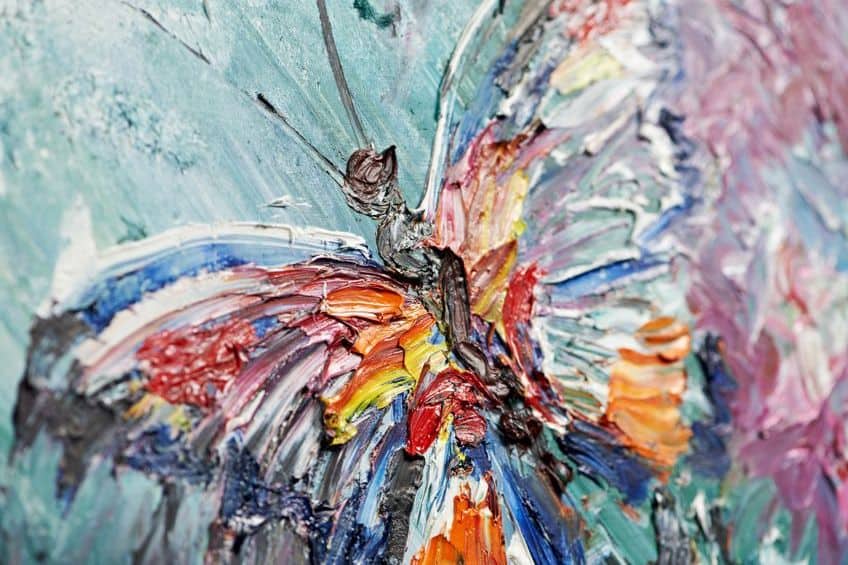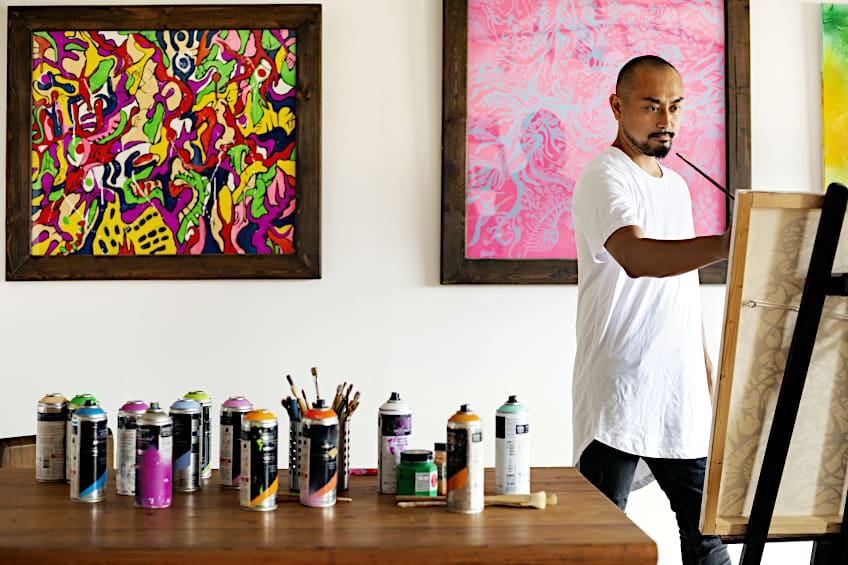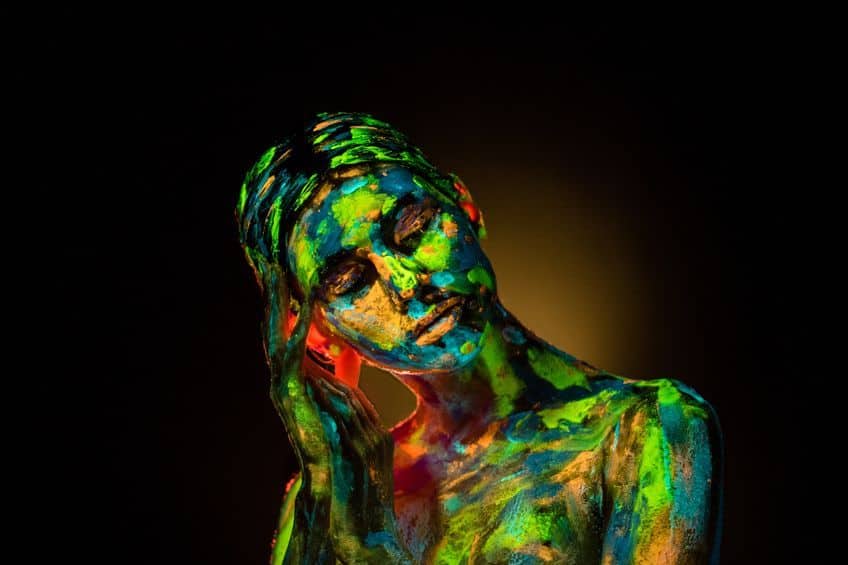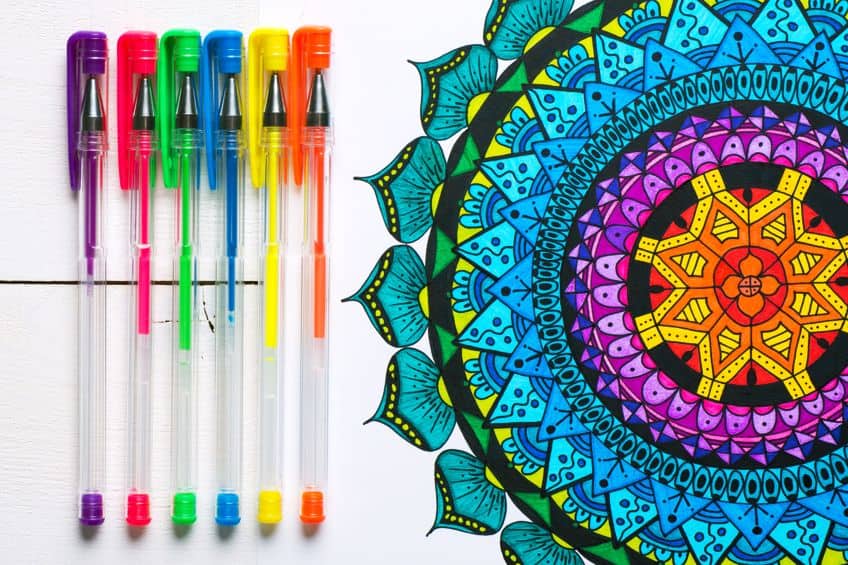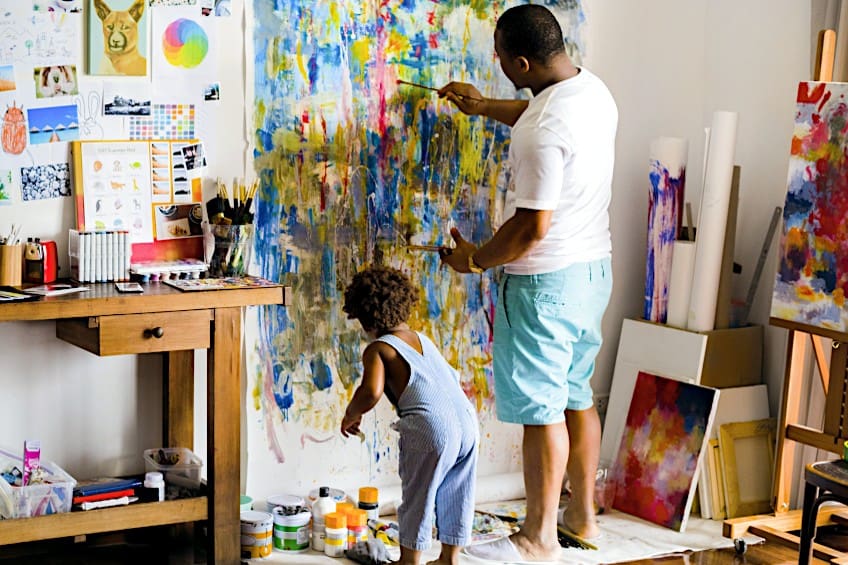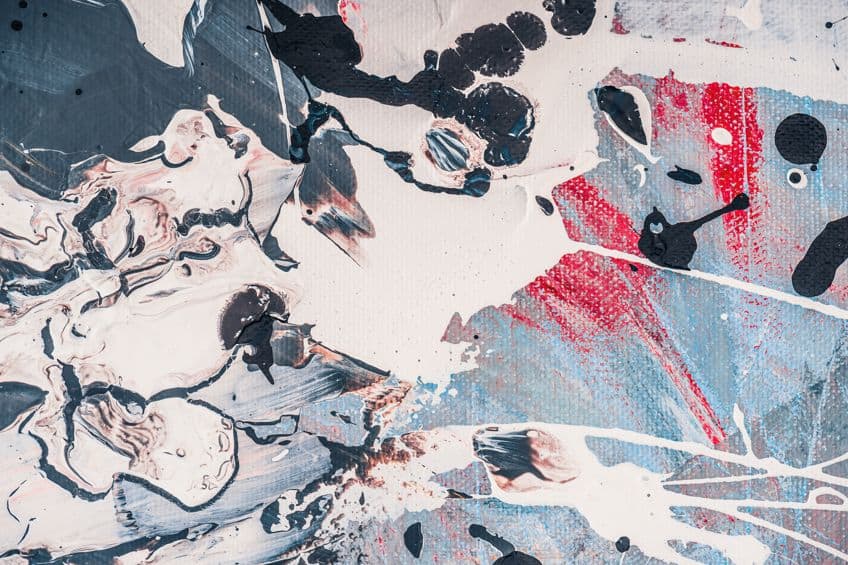How to Find Your Art Style – A Look at Different Art Styles to Try
Every well-known artist has something about their art that makes their work striking and unique. This is called their art style, which they have developed and grown over their career. If you are just starting, finding your own personal art style can feel intimidating and overwhelming so we have put together this guide to help you to discover and refine your style into something distinct and memorable.
What Is an Art Style?
Before learning how to find your art style, it is helpful to understand what an art style is. Simply put, your art style includes many aspects of your art such as the medium, color palette, or tools that you use in your piece as well as the techniques you use to make marks on your paper or the brush strokes on your canvas. It includes the themes, subjects, moods, and shapes that you choose to capture or that you draw inspiration from.
All of these different elements combine to create your unique style, kind of like your art fingerprint, that is present throughout your work. When asking “what is my art style?”, it is important to consider all of these different aspects.
There are many famous styles of art from newer styles such as modern or pop art to more traditional styles of realism and impressionism. Even artists that work in the same style have their own unique art styles. For example, both René Magritte’s 1964 Man in a Bowler Hat and Salvador Dalí’s 1931 The Persistence of Memory are painted in the surrealist art style, however, each artist has their own unique way of expressing it, and this is their art style.

Having a recognizable art style helps to distinguish you from other artists and makes your work more identifiable, which sets you apart. Other people may also pay more for your art if your signature style appeals to them. Mastering your own style is one of the most difficult parts of your art journey and everyone’s style is unique as such, there is no one path to finding your own. Your style will change, grow, and become more refined throughout your art journey.
Although it will gradually develop into your own unique art style over the years, there are ways to explore it and actively work on developing and nurturing your own distinctive and aesthetic art styles.
Popular Art Styles
There are many different art styles and, while almost all art styles can be used in any medium, there are a few art styles that are associated with particular ones. When you first start it is useful to explore different art styles when developing your own.
Painting Art Styles to Try
Realism, as the name suggests, is creating a piece of art that is truthful to the subject. This style avoids supernatural elements or distorting the subject and produces something true to life. Impressionism is one of the oldest styles of painting, beginning around the 19th century.
This art style focuses on accurate lighting and shading in the piece while using fine but visible brush strokes.
Although Pop art is still a relatively young art movement, it remains one of the most aesthetic art styles of painting. This style is all about presenting current or past cultural trends and icons. The movement began as a way to challenge traditional conceptions of art and has grown into a vibrant and dynamic art style. Paint, brushes, and other tools provide the perfect means to create bold lines and lively colors in this style.
Other great painting styles to try include:
- Fauvism
- Expressionism
- Renaissance
- Baroque
Drawing Art Styles to Try
If pencil and paper are more to your liking, there are many different drawing styles out there to try. Everyone would agree that line art is more than just a movement but a fundamental technique for all art styles. Line art, unsurprisingly, uses lines of various weights against a plain background to capture the subject. Line art can also allow for drawing in different styles, such as abstract or realism.
Figure drawing is another example of a widespread drawing art style. Figure drawing is great for exploring the human form and understanding how to exhibit movement in a static piece.
Drawing pencils provide the perfect medium for Pointillism. Pointillism is a technique in which you use patterns of small and distinctly colored dots to create a larger image when viewed from further away. This art style is an amazing exercise in seeing how small parts all combine to create the big picture, not unlike developing your art style.
Other fun drawing styles to try include:
- Caricature
- Cartoon or Anime
- Art Nouveau
- Cubism
A Guide on How to Find Your Art Style
There are almost as many ways of finding your art style as there is a multitude of different aesthetic art styles to try out there. While your style will develop naturally over your journey, nurturing it will give you a deeper understanding of yourself and your art. Your style is a combination of your technical skills, what inspires you, and creative decisions so by focusing on these aspects, you can help to develop and grow your style. If you are struggling with how to find your art style, we have put together a few tips to inspire you.
Research Art Movements
Researching different art styles and movements is a great place to start for beginners. You can get to know what is out there and, if any stand out to you, you can consider incorporating aspects of it into your style. There is a multitude of different art movements to inspire your unique art style. Some of these include Minimalism, Surrealism, Pop art, Contemporary, Cubism, Impressionism, Expressionism, Modernism, and Abstract art, but there are many more art styles out there. You can find pieces online, in museums, in art galleries, in art books, or even by speaking to other artists.
Once you have found specific styles that you resonate with, you can also look at more specific art styles of individual artists that you like, which can help you narrow down the techniques you would like to invest more of your time into later.
Focus on what about the artist or movement you were drawn to use it as inspiration. You can even research what inspired some of their works and maybe use it as inspiration for your own. Have a look at the similarities across their pieces or what strikes you as an artist and try to identify characteristics of their art style. This practice can give you a clue as to what to look for in your own art style. It is also important to look at art styles that do not appeal to you and try and think about why that is.
Identifying what you do not enjoy and why can save you time later and give you some insight into your art style.
Go Back to the Basics
Finding your art style and developing your technical skills go hand in hand. When you first start as an artist, learning via copying is common to improve your technical art skills. Copy is a great way to get your bearings in art and develop not only your skills but also your art style.
No art style is 100% original and if you like a particular art style or artist when you practice drawing in those styles, your own art style might grow to incorporate certain aspects of them.
Copying artists does not mean trying to recreate their work. Purely imitating someone else’s art style will not help you develop your own, rather try incorporating the different techniques, themes, or mediums that your favorite artist uses into your pieces – the more the merrier. Build your understanding of other people’s art-making process and use them as a reference in your own work.
Incorporating inspiration from various sources allows you to combine different elements and put your own personal spin on them to make something that is truly unique to you and your style.
Practice Observing
Copying does not stop at artists and styles but also includes your environment and the world around you. The skill of observation is often overlooked because it is so simple but is an essential skill needed for developing your art style. You can improve your observational skills by taking note of the small, seemingly inconsequential details of the world around you.
Details such as shadows, how colors and objects change under different lighting, facial expressions, and the effects of wind and gravity on the things around you.
Noticing these details will undoubtedly improve your art allowing you to not only make more life-like paintings but also anchor your more abstract pieces in a strong foundation of basics. You can nurture your observations even further by drawing still lives of different people, animals, and objects under different lighting conditions and from unusual angles. This will encourage you to notice small details that can be used to set your pieces apart.
A seasoned eye also has an easier time identifying what draws them to something or which techniques and tools were used and therefore makes it easier to find your art style amongst your own pieces.
Explore Beyond the Basics
Your life experiences can also be used to inspire your art style. There are a lot of different aspects of your life that you draw from when developing your art style. The media and entertainment you consume, your travels both locally and abroad, your history as well as the histories of your family all combine to make you who you are and so influence your art style. Once you have gotten the knack of drawing still lives, try recreating them in different art styles and mediums. This is a great way to figure out which styles you enjoy and want to focus on and incorporate into your own art styles.
Once you are comfortable with the basics of composing and producing pieces, you can go beyond and explore different materials and techniques.
Beyond the paintbrush and pencil is a wide array of methods to create art that could be used to influence your art style. Acrylic pouring, photography, or more hands-on embroidery are all excellent mediums to try out, and all offer different benefits to nurturing your art and art style.
Try experimenting with different environments. You may find that painting or drawing in a different room or even outside offers you a different perspective on your art or unexpected inspiration.
Not everything you try you are going to find enjoyable. Something that makes you unhappy is not sustainable and probably not a good fit for you, but you might be able to take something out of the experience and put it towards your own style. It is best not to focus too much on these and rather to create pieces that make you happy while challenging yourself.
Discover the Message Behind Your Art
Once you are comfortable with the basics it can be helpful to the development of your art style to think about the message or perspective you are trying to convey in your pieces. Understanding your message will help you get the dimensions, proportions, and composition of your art right and provide some inspiration when you are in a creative rut.
Experiment with mediums to see which one, or even what combination, conveys your message best and make it truly unique and your own.
Your art style is not only about the mediums, techniques, or tools you use, however, but also about the subjects and themes you choose to use as well. What you draw and how you draw it can be more recognizable as an art style than what you use to create it.
Aspects such as a preferred color palette or recurring items and characters can give your art that signature look and set it apart from other artists.
Challenge Yourself
Participating in art challenges offers many benefits that help in developing your art style. Many art challenges concentrate on specific themes, mediums, or techniques and so art is great for trying out new styles as you will continuously be practicing and improving these skills throughout the duration of the challenge. Art challenges push you out of your comfort zone in a fun and casual way.
They allow you to gain experience with a particular subject or medium and the structure they offer is especially useful for beginners.
The large online community of art challenges also offers a bonus benefit. Posting your pieces on social media using the challenge hashtags may increase engagement with your art. This can help you reach a broader audience and gain more exposure and followers.
While they can be enjoyable, you do not need to follow an established art challenge. Instead, you can create one for yourself that focuses on what you feel you need to work on.
Taking a class and learning to use different mediums, techniques, or different drawing styles from those who have mastered them is always beneficial and another way to challenge yourself. Even if you do not continue with the techniques, the skills you have learned are something to take with you into your journey.
Practice Makes Picture-Perfect
Just like it takes time to hone your technical art skills, no one discovers their art style overnight. Even once you feel you have developed a style that is unique to you, it will continue to change and grow throughout your creative journey. Looking at what others create is valuable but creating some of your own pieces is how your art style develops.
The more you practice both your physical skills and the message behind your art the more confident you will become in both your art style and ability.
Having a consistent routine or set time dedicated to your art, even if it is as little as 15 minutes a day, builds good habits that will carry you beyond your art style. Quick sketches and cute little doodles are the perfect way to do this. Doodling is an important practice; they provide a way to capture momentary inspiration for future projects that can be more filled out but are also unstructured and without any pressure.
Making time when you have no expectations or plan for what you create fosters creativity and helps your art style develop naturally. You can never hope to develop your own distinct art style if you do not put in the work. Remember not to rush or force yourself to create your art style as you will miss very important additions along the way that will make your work better and unique.
Rather practice often and, with patience, your style will grow organically.
Build a Portfolio
With all your practice you can build a portfolio. A portfolio is not only a body of work you have behind you for future employment, but it can also help you look back on your work to see how you have progressed and grown. With a portfolio, you can see which parts of your style repeat and give you some insight into your unique style, plus let you know where to focus your time.
Are there any recurring elements, themes, or subjects that appear in your art often? Is there a particular art style, technique, or medium you enjoy creating with?
Ponder why you are drawn to them and learn something about yourself and your style in the process. While you may be hired for your unique signature voice, developing your art style purely on what you think is popular or marketable will make you frustrated as tastes and trends change. It is best not to use your industry success as a measure for what you think of your art style and as comparing yourself to others can be detrimental to your development both as an artist and personally. Do not worry about trying to be trendy, fit in, or how marketable you think your art style is.
If you make things you genuinely enjoy and love, then you are more likely to keep going and stay motivated on your art journey.
Consult a Mentor
Work with people to keep you on track, get advice, and expose you to new perspectives, mediums, and techniques. It is helpful to have someone objective to talk to who has been through this process already. Even though their journey may not be the same as yours they may have had similar experiences with finding their own unique art style that could help you find yours.
Choose people who are aiming to help and guide you, not knock you down. They can help identify your strengths and weaknesses as well as what works in your piece and what doesn’t and why.
An outside perspective can also more easily identify repeating treads or styles in your work to help you identify your art style while providing criticism or feedback on your artwork and style. No one likes to hear bad things about their pieces, but it is very important not only for developing your technical skills but your art style as well.
Constructive criticism can help you identify what you need to focus more on and offer you a perspective on how other people will view your art.
Think about what they say but do not take it personally. If someone does not like your art style but it makes you happy, looks good to you, and inspires you to keep on creating then follow that. Be faithful to your style even if it is not to everyone’s liking and follow your instincts. If you like it there will be others out there who like it as well.
Make Mistakes and Have Fun
Don’t forget to have fun while pushing yourself. Your art journey will be challenging but it should never feel like a chore. Have patience with yourself and your art. Progress happens gradually, often without you even noticing. Attainable goals and manageable expectations are key to ensuring that you do not become discouraged in your art style journey. You will not love everything that you create but every project is an opportunity to learn and grow.
It is important to avoid becoming too focused on being perfect – do not be afraid to make mistakes. You might even find inspiration in unexpected places.
Be proud of your journey and your achievements no matter how small they may feel. Do not focus on comparing yourself to other artists as it might end up with you being despondent and unhappy with your work. Remember that everyone started somewhere and that mistakes were an important part of getting them there. Every error is an opportunity to learn.
There is no right or wrong way as long as you are enjoying the journey and creating art. Your style does not have to fit into a category, it is whatever makes you happy and excited to create. Taking yourself too seriously can put unnecessary pressure on you and stifle your creativity. Embrace your mistakes and learn how to use them to your advantage in your piece rather than letting them derail you. Time and practice will create a strong individual style.
As you can see, different aspects of your art combine to create your unique art style from the medium to the art subject or theme as well as your own techniques and tools used. Cultivating your art style takes practice and patience so keep looking for repeating trends in your work and remember to have fun on your art journey.
Frequently Asked Questions
What Is My Art Style?
There are many aspects of your art that could define your art style and it is different for everyone. Characteristics such as the subject or theme your art centers on, as well as the medium, the tools, or the techniques you use to create your pieces, could all have something that is unique and makes your art style stand apart from other creators.
What Are Popular Art Styles?
There are hundreds of different art styles that have been developed across the world and some of the most popular styles of art include Modern art, Pop art, Abstract art, Impressionist, Surrealism, Contemporary art, Cubism, Realism, and Expressionism. Many of these art styles have been used for over a century and continue to be popular even today.
How Can I Develop My Art Style?
Every artist has a different journey to their own unique art style, however, there are a few general steps you can take to develop your own. Researching art movements, mastering your basic techniques, as well as exploring your environment and different mediums are perfect ways to find elements that you can incorporate into your art style. Explore the message behind your art, challenge yourself, practice often, do not be afraid of making mistakes and having fun, and your art style will grow naturally over time.
Jordan Anthony is a Cape Town-based film photographer, curator, and arts writer. She holds a Bachelor of Art in Fine Arts from the University of the Witwatersrand, Johannesburg, where she explored themes like healing, identity, dreams, and intuitive creation in her Contemporary art practice. Jordan has collaborated with various local art institutions, including the KZNSA Gallery in Durban, the Turbine Art Fair, and the Wits Art Museum. Her photography focuses on abstract color manipulations, portraiture, candid shots, and urban landscapes. She’s intrigued by philosophy, memory, and esotericism, drawing inspiration from Surrealism, Fluxus, and ancient civilizations, as well as childhood influences and found objects. Jordan is working for artfilemagazine since 2022 and writes blog posts about art history and photography.
Learn more about Jordan Anthony and about us.
Cite this Article
Jordan, Anthony, “How to Find Your Art Style – A Look at Different Art Styles to Try.” artfilemagazine – Your Online Art Source. January 4, 2023. URL: https://artfilemagazine.com/how-to-find-your-art-style/
Anthony, J. (2023, 4 January). How to Find Your Art Style – A Look at Different Art Styles to Try. artfilemagazine – Your Online Art Source. https://artfilemagazine.com/how-to-find-your-art-style/
Anthony, Jordan. “How to Find Your Art Style – A Look at Different Art Styles to Try.” artfilemagazine – Your Online Art Source, January 4, 2023. https://artfilemagazine.com/how-to-find-your-art-style/.



